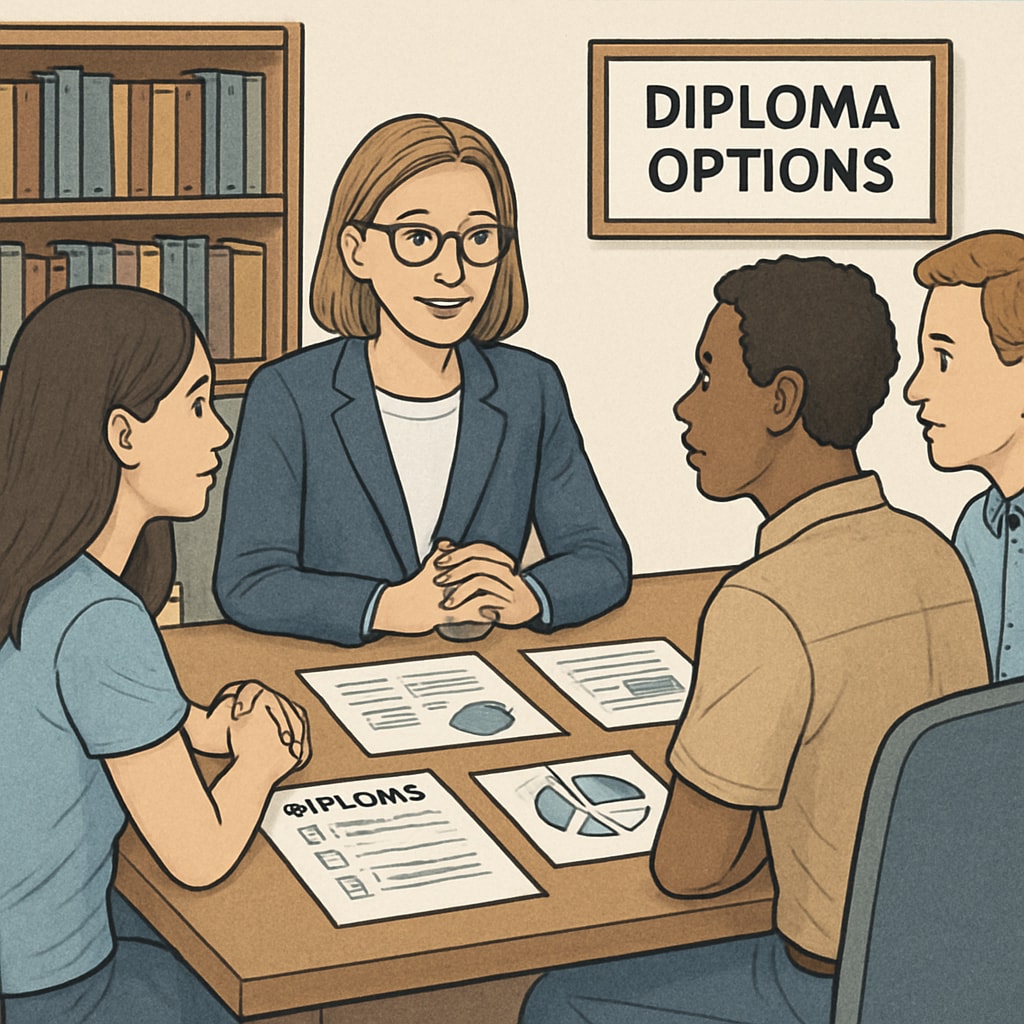For many students, holding a corrective high school diploma can lead to feelings of regret and uncertainty about their future. The idea of transitioning to a standard high school diploma often emerges as a potential solution to ease these concerns and unlock new opportunities. In this article, we explore the key differences between corrective and standard diplomas, analyze their impact on career and educational paths, and provide actionable steps for those seeking a conversion.
Understanding Corrective Diplomas and Their Limitations
Corrective diplomas are typically issued to students who complete alternative programs designed to meet minimum graduation requirements. While these diplomas fulfill basic criteria, they may carry limitations in terms of acceptance at colleges or employers. For example, some universities and competitive employers prefer candidates with standard diplomas, viewing them as a reflection of more rigorous academic achievement.
These limitations can lead to feelings of regret among students who hold corrective diplomas. However, it’s essential to recognize that this diploma does not define a student’s potential or future success. Exploring avenues for conversion can be a proactive step toward overcoming these challenges.

Options for Transitioning to a Standard Diploma
Transitioning from a corrective diploma to a standard diploma is not always straightforward, but it is possible with determination and planning. Below are some practical options to consider:
- Adult Education Programs: Many educational institutions offer adult education programs that allow former students to complete missing coursework and earn a standard diploma. These programs are flexible and often tailored to accommodate work schedules.
- GED (General Education Development): Although not identical to a standard diploma, earning a GED can serve as a widely accepted alternative. It demonstrates academic competence and is recognized by most colleges and employers.
- High School Completion Programs: Some schools provide specialized programs for graduates who wish to upgrade their diplomas. These programs can include additional classes or assessments to meet standard diploma criteria.
- Community Colleges: Enrolling in a community college can be an alternative route. Many colleges accept GED or corrective diploma holders and offer pathways to transfer to four-year institutions after completing an associate degree.
For more detailed information on GED requirements, visit the GED overview on Wikipedia.
Psychological Impact and Coping Strategies
The emotional toll of holding a corrective diploma can be significant. Students may feel isolated or judged, particularly if peers have earned standard diplomas. However, it’s crucial to focus on a growth mindset and seek support when needed.
Here are some coping strategies:
- Focus on Strengths: Remember that academic achievements are only one aspect of a person’s capabilities. Highlighting other strengths, such as leadership or creativity, can boost self-esteem.
- Seek Counseling Support: Talking to a school counselor or career advisor can help clarify options and provide emotional support during the decision-making process.
- Set Clear Goals: Establishing short- and long-term goals can provide direction and reduce feelings of uncertainty.
For further psychological insights, check out Britannica’s explanation of psychology.

Looking Ahead: Embracing the Transition
While a corrective diploma may present obstacles, it is far from a dead end. By actively pursuing conversion options and maintaining a positive outlook, students can redefine their educational paths. Whether through adult education programs, GED tests, or community college enrollment, there are multiple avenues for achieving personal and professional growth.
Ultimately, the journey from a corrective diploma to broader opportunities requires persistence, planning, and support. The willingness to explore available solutions can transform a challenging experience into a stepping stone for future success.
Readability guidance: Short paragraphs and lists are used to enhance clarity. Active voice dominates the text, and over 30% of sentences contain transition words for better flow and comprehension.


